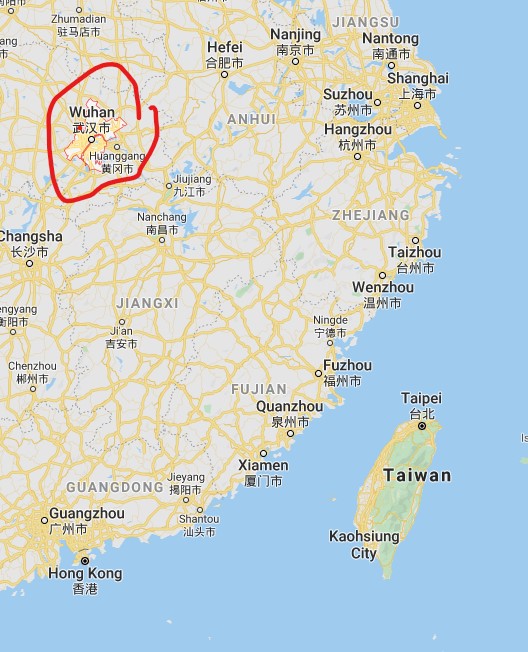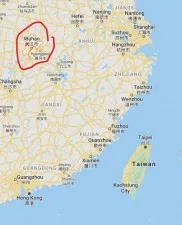As the epicenter of the coronavirus epidemic Wuhan, an industrial powerhouse and the capital of Hubei Province, is locked down. The Hubei Provincial Government has ordered most enterprises to resume work no earlier than midnight tonight (February 13). Given what we know about the spread of the epidemic, an early resumption is unlikely.

Clover Lee of ESM-China wrote an article late last week summarizing what’s happening to whom in Hubei Province. The article appeared in EE Times, a sister publication of ESM-China. I have selected the content from Ms. Lee’s that relates directly to display panel production, have rewritten as seemed appropriate, and added some content of my own.

HC SemiTek is the leading supplier of LED chips for display screens in China. No back-up plans for the Wuhan facility for the duration of the lockdown were reported, nor is the lockdown mentioned at all on the company’s website.
China Star Optoelectronics Technology (CSOT) produces small and medium-sized displays at two plants in Wuhan. The Gen 6 T3 plant is the largest low-temperature polycrystalline silicon (LTPS) plant in the world. The Gen 6 T4 plant produces flexible AMOLEDs. (TV-sized panels are made in Shenzhen and Huizhou, and are not affected by the current lockdown.)
TCL Group, which is CSOT’s majority shareholder (with Century Science & Technology Investment and Samsung owning the rest), announced the epidemic is causing short-term delays in supplying some production materials. But, says TCL, CSOT is working with key suppliers to obtain the materials it needs. This will require “adjustments” in production and operation strategies. TCL did not explain how jiggering CSOT’s supply chain will help when its plants are closed down.
BOE Optoelectronics Technology Co., Ltd. (BOE) is now the world’s largest manufacturer of display panels. BOE’s Gen 10.5 TFT-LCD production line in Wuhan is in its ramp-up phase, so, says BOE, immediate downstream impact will be limited.
Corning Display Technologies invested $1.4 billion to build a new production facility in Hubei (a section of Wuhan) to supply substrates for BOE’s new plant. Production started in 2019. With existing factories in Beijing, Chongqing, and Hefei, Corning says it has factories to spare. That’s true but it’s beside the point. Glass makers don’t ship Gen 10.5 substrates around China, or anywhere else. Quite apart from breakage and surface cleanliness considerations, they don’t fit under overpasses. On the other hand, there’s no reason for Wuhan Corning to make glass while its customer BOE is also locked down.
In Wuhan Tianma Microelectronics manufacturers small and medium size displays at its TM8 Gen 4.5 LTPS-LCD production line and its TM17 Gen 6 OLED fab. There is also a matrix-color-filter line in Wuhan. Tianma also has manufacturing facilities in Shenzhen, Shanghai, Chengdu, and Xiamen, as well as in Akita, Japan. Some of these plants have capabilities similar to those of the Wuhan plant, so Tianma should be able to adjust.
The most optimistic projection of Chinese industry insiders, said Ms. Lee, is that restrictions resulting from the epidemic situation will be completely lifted by mid- to late March, and the supply chain will gradually return to normal in April. My advice? Consult your local epidemiologist. (KW)
Ken Werner is Principal of Nutmeg Consultants, specializing in the display industry, manufacturing, technology, and applications, including mobile devices, automotive, and television. He consults for attorneys, investment analysts, and companies re-positioning themselves within the display industry or using displays in their products. He is the 2017 recipient of the Society for Information Display’s Lewis and Beatrice Winner Award. You can reach him at [email protected] or www.nutmegconsultants.com.

